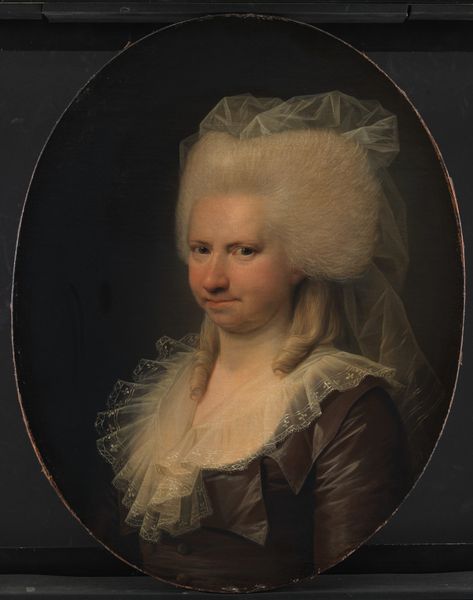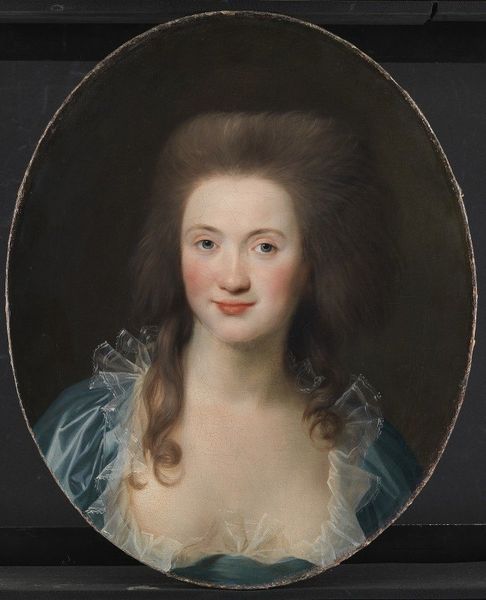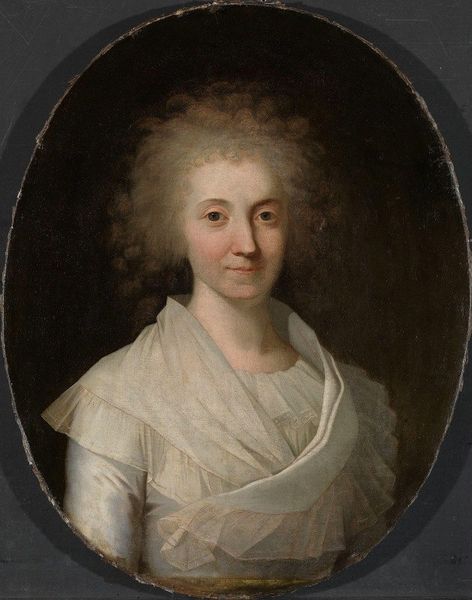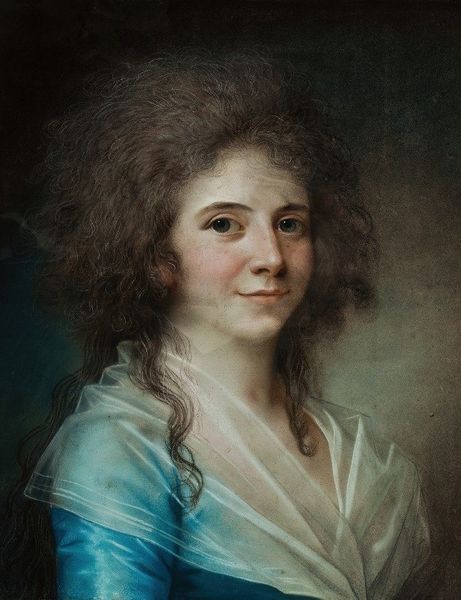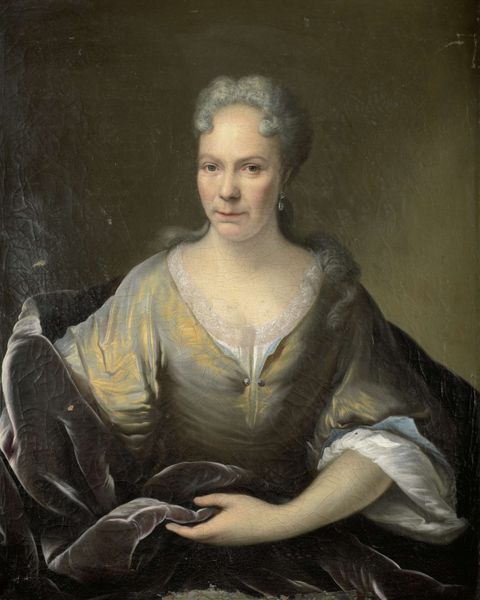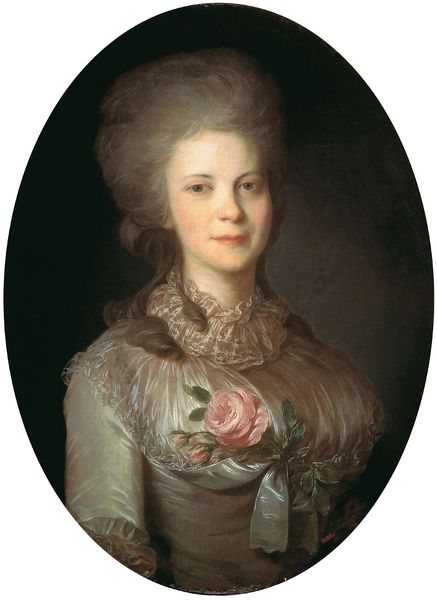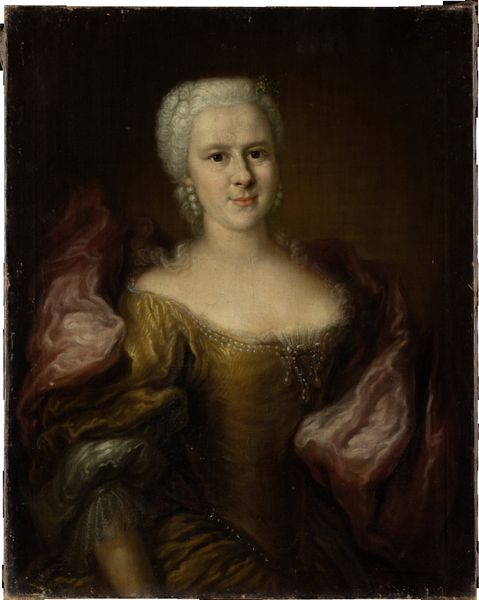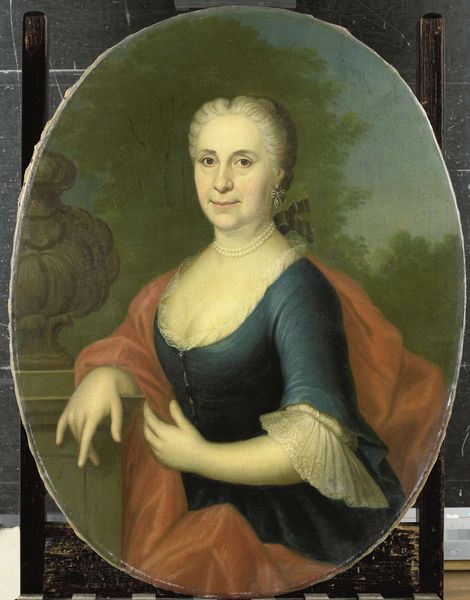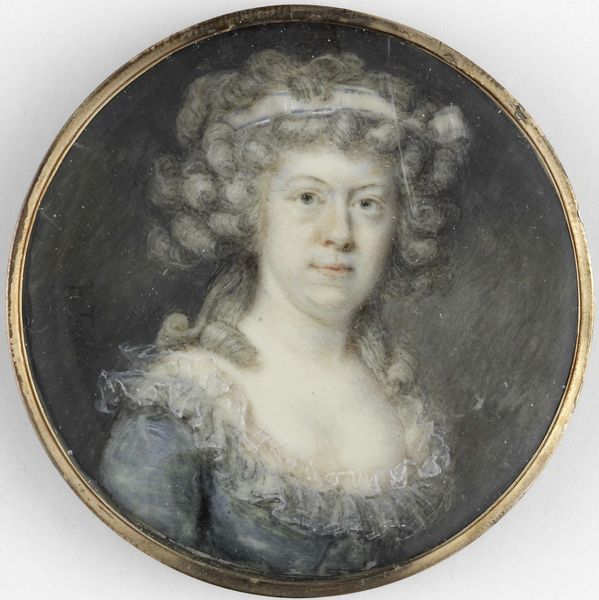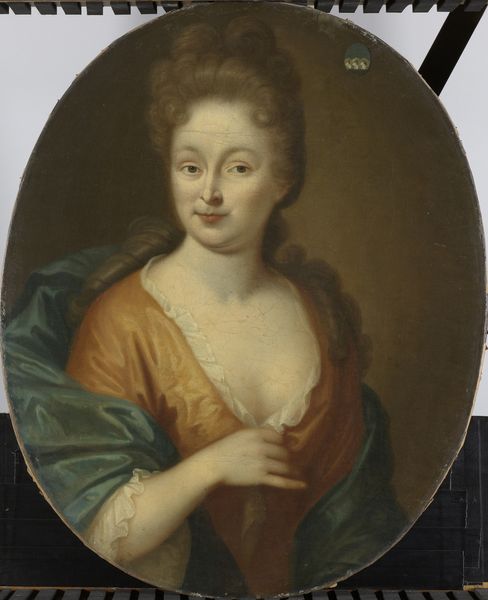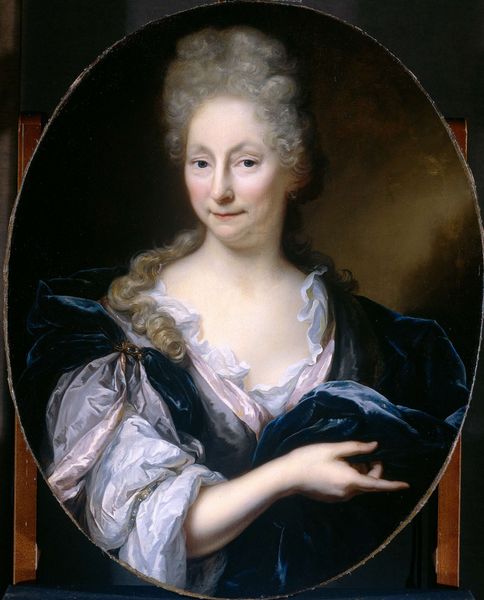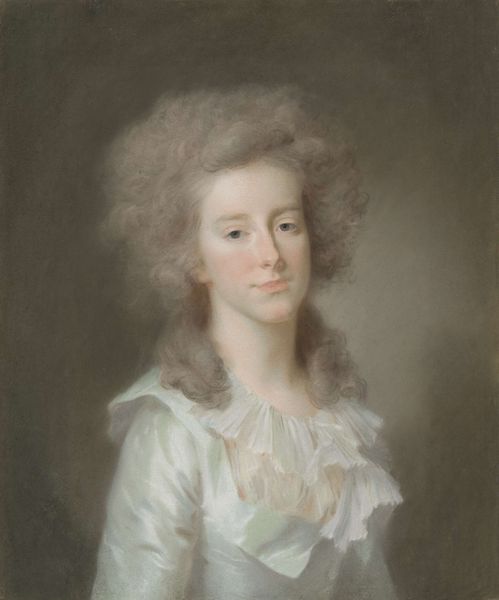
Copyright: Public Domain: Artvee
Curator: Jens Juel painted this portrait of Charlotte Sophie Gerner, wife of Henrik Gerner, in 1785. Painted with oils, its elegant formality is characteristic of the Rococo style. Editor: My first impression is a somber elegance, and yet there is something about the stiffness of the pose that is slightly unsettling. It’s the contrast between the elaborate presentation and what feels like a subdued emotion in her expression. Curator: Well, portraiture during this period was incredibly codified, particularly when representing the upper classes. The visual vocabulary was quite fixed: the pose, the lighting, the trappings of wealth like the fashionable dress and elaborate hairstyle all served to communicate status and respectability. Editor: Of course, the height of that coiffure is astounding, an instant signal of societal standing. I wonder about the psychology of these monumental hairstyles. Surely, they were uncomfortable? Perhaps symbols of a life lived removed from practicality and the mundane. Curator: Certainly, such conspicuous displays were markers of identity and privilege, instantly legible to contemporary audiences. And symbols of beauty in this specific moment in time. Think of this artwork as a carefully constructed performance intended for public consumption. Editor: It’s fascinating to consider that intersection between individual personality and social role-playing that we see in the portrait. Her dark, almost severe dress seems an interesting contrast with the extreme lightness of her hair and that delicate lace. Does it suggest some tension or contradiction within her? Curator: Possibly. We also can't ignore the way Rococo artists imbued even formal portraiture with a sense of fantasy. This can easily distract modern viewers from any complex individual feelings, with such a sharp focus on decorative embellishments. Editor: That very intentional construction gives us so much insight into the societal pressures and ideals of the time, offering us the ability to look back at societal role models. I find this makes engaging with this work endlessly fascinating. Curator: Exactly, and hopefully allows audiences to read those past projections while still remembering the essential human figure underlying these performative artworks.
Comments
No comments
Be the first to comment and join the conversation on the ultimate creative platform.
